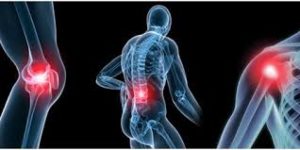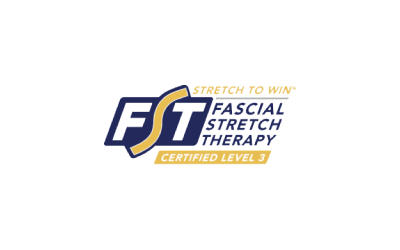Join the conversation.
Welcome to Part 1 of 3 of Pain Matters, where Dr Nick Penney provides some clarity on the terminology used in relation to pain.
What is Acute Pain?

The term acute pain is used to describe how long we have experienced the pain, not how intense or severe it is.
This is important because the treatment and advice for acute pain differs from the other two pain types, sub-acute and chronic pain, which we will address in later articles.
Acute pain is defined as pain that has been present for 6 weeks or less.
So, from the moment the alarm sounds, which can be either a sign of damage or just the threat of damage to our tissues, the clock is ticking!
The Evidence & Integration
There is a lot of scientific evidence about the optimal way to treat acute pain available for practitioners, which has been included in the evidence-based clinical practice guidelines I helped write a few years ago.
Despite these guidelings being constantly updated in-line with the developing evidence, for many clinicians it can be hard to integrate the research to ensure the best possible outcome for their patients.
We do know that the best way to prevent chronic or persistent pain developing is to deal with acute pain effectively, so if the alarm of acute pain keeps ringing (or it goes on snooze!), the sooner it is dealt with, the better.
Recognising there is sometimes the need to respond quickly, Nick does not run long waiting lists and we will always do what we can to see people in times of need.
Who Is Dr Nick Penney

I originally graduated as an osteopath from The British School of Osteopathy (now University College of Osteopathy) in 1980. Completing an internationally recognised course in sports medicine in 1981, I was appointed Honorary Osteopath to both the England Men’s Volleyball Team and Otley RUFC in conjunction to practising with my lifelong friend and mentor, Professor Kim Burton.
Emigrating to New Zealand in 1989, I opened a practice in Howick, Auckland and was elected as the president of the New Zealand Register of Osteopaths in 1991. At the time we were working to achieve statutory recognition and regulation of osteopathy as well as setting up the country’s first full time osteopathic degree at UNITEC. My role also included working on the first New Zealand evidence-based clinical practice guidelines for the management of low back pain with ACC and the National Health Committee. These guidelines were the first to recognise how the stress of our everyday lives, and past experience, can influence recovery from low back pain. This led to my decision to enhance and expand the knowledge and experience gained from my first 20 years in practice, whilst in Australia gaining my PhD in Musculoskeletal Medicine at the Centre for National Research on Disability and Rehabilitation Medicine, Faculty of Medicine, University of Queensland, Australia.
My research was based around the multitude of factors (biomedical, psychological and social) that intertwine to create and maintain pain, particularly low back pain. During this time, I was also appointed onto the Australian expert panel on low back pain, and the steering committee of the Australian Acute Musculoskeletal Pain Guidelines Group, where we developed and published extensive evidence based clinical practice guidelines for the management of acute musculoskeletal pain.
On our return to New Zealand, my wife and I set up Integrative Pain Care, combining our knowledge and experience, integrating them into a biopsychosocial understanding of pain.
Pain is best viewed from this complete (holistic) understanding, but it remains poorly understood by most clinicians, who continue to treat pain from a single biomedical or biomechanical perspective. I combine osteopathic treatment with pain education, paced exercise, sleep hygiene, relaxation training and the ‘third wave’ of psychological therapies of Mindfulness and Acceptance Commitment Therapy into my clinical care.
There is no ‘one size fits all’ approach to musculoskeletal pain, I tailor my approach to the individual needs of each patient. The evidence shows that this approach is clearly effective in both acute pain (less than 3 months) and chronic pain (more than 3 months).
-
Osteopathic care for acute pain – in the past 12 months the number of consults I required to help patients on ACC was 50% less than the average for the osteopathic profession.
-
Pain management for chronic pain – my approach produced the best objective patient outcomes of all ACC pain contract holders with many of my patients being independently assessed as no longer suffering with chronic pain. Whilst I no longer hold an ACC contract, pain management can also attract the ACC osteopathic subsidy.




